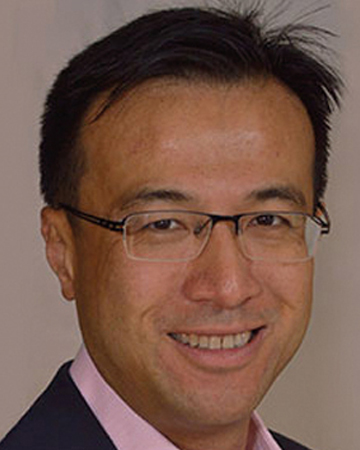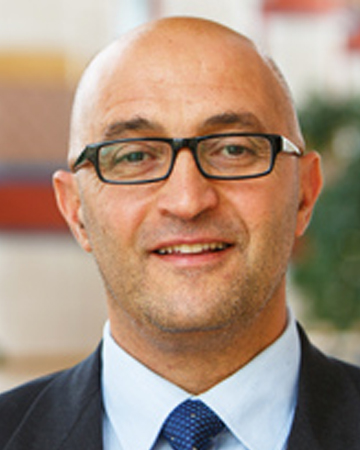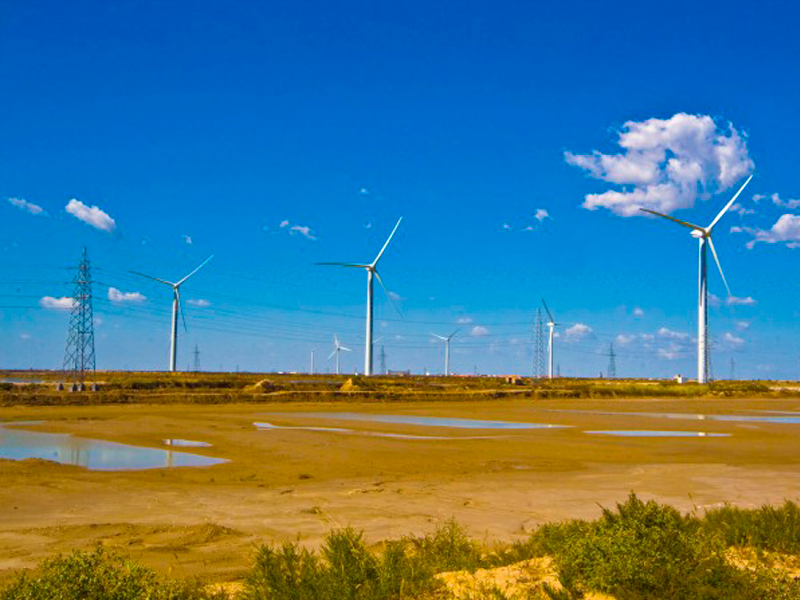By Mark Esposito, Terence Tse & Khaled Soufani
In this article, the authors discuss China’s implementation of Circular Economic development programs in order to address the country’s pressing environmental issues.
China’s remarkable economic success has been accompanied by unparalleled population growth and extensive resource use. As China continues to grow, the population in urban centers will reach close to 1 billion residents by 2025 and the country will have 221 cities with populations greater than one million. Unfortunately, this growth is unsustainable given that the country has not managed its resources well until now: it suffers from high emission industries, unsafe pollution levels, and severe water contamination. China is also the world’s largest source of carbon emissions and it fails to meet many standards of international health. These environmental issues are directly affecting standards of living – for example, areas with poor air pollution shorten life expectancy by several years. China is addressing these issues through involvement in initiatives such as UNFCCC negotiations, the Asia-Pacific Partnership on Clean Development and Climate, and the G8 Summit. Realising the urgency of the environmental issues, many cities in China are also addressing their specific environmental burdens using a city-level Circular Economics approach. Circular Economic development has entailed investment in clean production methods, clean energy sources, resource-based planning, and waste-utilisation. Unlike in other countries where the development of circular economies can be considered proactive measure, China development of a circular economy is unarguably being built out of necessity.
This analysis will focus on a few provinces that were recognised by the UN for their success as “eco-provinces”: Jilin, Shandong, Zhejiang, and Anhui. The analysis will consider the various methods used in the development of their circular economies as well as the benefits that ensued.
Success in Circular Economic Agriculture (Anhui)
The Anhui province was one of the first provinces in China to research and implement Circular Economics due to its over-population, lack of resource, supply and demand gap, and pollution. Circular Economic Agriculture was one major focus in the province as they hoped to prevent agricultural pollution, reduce the cost of agriculture production (a major burden for farmers), and encourage ecological development. The hope was that these circular agriculture technologies would result in higher yield crops, lower production costs, conservation of land, and the reversal of environmental deterioration that is often caused by manure and pesticides. The Agricultural Economy in Anhui was very successful in this respect. One especially successful achievement was its development of edible fungi as a sustainable fertilizer. In brief, the byproducts of crop straw, rattan, hull, and wood crumbs are used to cultivate edible fungi which is then turned into biogas, which is a mixture of methane and carbon dioxide produced by the bacterial decomposition of organic wastes with potential use as fuel or as an organic pollution-free fertilizer. The mixture of byproducts could also be used as fish feed and livestock feed. Any of these uses ultimately reduces the use of harmful chemical pesticides and fertilizers. Anhui has already developed and used the edible fungi in several counties.
[ms-protect-content id=”9932″]Success in Circular Economic Marine Economy (Shandong)
The Shandong region of China is in a province characterised by narrowing fishing waters, poor fishing equipment, and slowed developed caused by restricted equipment. In this region, industrial wastewater combined with polluted domestic sewage and breeding pollution has resulted into the decline in ocean quality, eutrophication of offshore waters, decline in the ecological environment, desertification of seabeds, and harms to the regeneration ability of the fishery resources. In addition, the demand for fishing exceeds the supply as nursery farms have become smaller and more expensive to maintain. It was therefore critical that the substantial burdens on marine resources in this region were addressed and that a circular economic marine economy was created. Substantial success has been found in Shandong’s city of Qingdao, which was one of the four cities designated by China’s National Development and Reform Commission to carry out pilot recycling projects in China designed to develop sustainable disposal methods of electronic waste. Qingdao worked to develop several dissembling lines for refrigerators, washing machines, TV sets and air conditioners and put these methods in operation in early 2005. In addition to the dissembling lines, Qingdao also set up a collection network for the households’ electronic waste in 2007. After finding the endeavor successful, Qingdao has worked to also expand the product into Shandong province.
Success in Circular Economic Energy Initiatives
In addition to the initiatives to clean the marine ecologies described above, the Qingdao regatta venue at the Olympic Sailing Center in the Shandong province made significant efforts toward development of solar and wind energy sources. As explained before, this region of China has faced major burdens caused by excessive resource consumption and ecological overload. Qingdao has developed several ways to deal with these issues as it relates to energy. For example, several dozen street lamps along the Qingdao’s main seawall are powered by wind energy that saves several thousand kwhs of electricity each year. Solar powered systems which help provide hot water and adjust water temperatures were also installed in this region, and these generate several hundred thousands kwhs of electricity every year as well. In addition, a seawater air-conditioning system regulated the temperature for a several thousand square meter area around the Olympic Center’s media center.
The Anji county region of Zhejiang has also developed a very innovative method of concentrating solid waste that is sent to a power station and used for electricity power generation. Similar to other regions with circular economies, Anji developed this as a result of its recognition that China needs to take steps toward mitigation overuse of resources and pollution. Toward the goal of environmental protection and maintaining an energy source, the government in Anji county agreed to financially support up to 50% of each individual project cost or a total input of 500,000-100,000 Yuan for large solid waste and sewage treatment projects. In addition to this financial incentive, the government also recognises innovative practices. Anji’s success has led it to also develop other environmental initiatives, and the province is now recognised widely as an ecological tourist destination.
Similarly, consider Anhui’s Conch Kawasaki Energy Manufacturing Company which started utilising new ways of producing cement plant components such as vertical cement mills, AQC boilers for waste heat recovery, and systems for waste recycling and sewage treatment in 2008. The company also developed a gasification system intended to repurpose municipal refuse into fuel for cement kiln. This environmentally friendly method repurposes waste into energy production, embodying the essence of circular economic energy practices. In addition to the environmental benefits, the process has brought significant economic advantage to the company as the system cut costs when compared with creating a waste treatment plant. This innovation proves that circular economic initiatives can also provide a company with new competitive advantage.
The Anhui province has been successful toward its goals of developing a circular economy within energy by more than one measure: in 2009, the province declared several hundred energy conservation programs with investment over 30 billion Yuan. As of 2012, the province also lent its support to over 150 industrial energy-conserving projects with financial support amounting to over four billion yuan. This investment was projected to prevent use of over one million tons of standard coal per year. The private sector has very clearly responded to incentives: the province already has over 700 companies with total output of 50 billion yuan that have been involved with energy conservation initiatives. These companies have primarily been successful in the areas of energy conserving vehicle R&D, nuclear energy and wind electricity projects, solar energy and PV industry, and biomass energy.
Success in Circular Economic Parks
As a province, Jilin has innovated one of the most interesting examples of a circular economic petrochemical park called the “Jilin Chemical Engineering Circular Economy Park”.To understand the region’s success, it is first important to note that the area was advantaged in its development of circular economic practices to begin with. The province has less chemical use and significantly less pollution than other regions in China. The region also has notable advantages when it comes to agricultural talent: it has three colleges focused on agricultural science and technology with over 20 agricultural related majors and has almost double the agricultural talent than in other regions of China. The fact that it developed an incredible petrochemical park is therefore remarkable but not completely unexpected.
The petrochemical park is a hub for remarkable innovation in production of recycled products that are often developed from petrochemical materials and has attracted involvement by over 90% of the province’s essentially production factors for petrochemicals. The park implements circular economic theory in several ways: it contains a clean production cycle in each plant to maximise resource utilisation, it shares resources among plants for efficient material exchange, and it also shares new and relevant information related to recycling. The plants within the park have created a network whereby the waste of one factory is turned into a production resource for another factory.
The park was approved in 2008 and is home to over 200 companies, 8 industrial chains (varying in purpose from oil refining to biochemical products) and more than 100 products. More than half of the products are produced on a large scale and have domestic market quotas. This park has served as a strong example of circular economic development in Northeast China. The 2010 industrial gross output value of the park was 160 billion yuan, a value that accounts for over half of the Jilin chemical industry. This project will undoubtedly provide key value for the chemical development region in Jilin. There is major potential to spread this project to other regions in China as the output value of the Chemical Industry in Jilin does not even account for 20% of chemical production in three northeaster provinces.
Petrochemicals are not the only industry in which a successful park has been developed and there are a number of other parks throughout China. Consider, for example, a papermaking petrochemical park that was developed in Guangdong. The Guangdong Silver Island Lake Papermaking Park addresses the high amount of energy used and pollution created in China’s papermaking industry. Guangdong’s park has horizontally integrated both the power industry as well as the paper industry in its production methods. Other circular economic parks across the country that are being developed include the Ziya Circular Economic Industrial Park in Tianjing, the Huaqing Circular Economic Park in Qingyan, and the Southwest Resource Recycling Industrial Park in Sichuan.
Conclusion
China has often been criticised as a country with irresponsible and unsustainable consumption and production standards. Although China continues to fare poorly on many measures of environmental practices and quality, the circular economic practices being instituted by certain regions are reversing its reputation and its environmental trends. Of its circular economic initiatives, many of which are still in planning stages and have yet to be implemented, the alternate development model designed by China’s Nation Development Reform Commission (NRDC) has been especially successful in encouraging sustainable practices that contribute to a more green economic development model. This model is based on harmonious development and the rejection of traditional constraints on economic development such as limited resource, high pollution, low efficiency, and environmental deterioration. Although this analysis focused on the provinces of Jilin, Shandong, Zhejiang, and Anhui as strong examples of circular economic success, there are yet other provinces that can serve as great examples as well.
Importantly, both national and local Chinese government has provided financial and practical resources to follow up on its stated commitment. The country has found much success in the areas of agriculture, marine ecology, energy, and new circular economic parks. China’s ability to adapt its practices proves that success within circular economics is not limited to developed countries such as Denmark, the Netherlands, and Sweden. Despite being a developing country, China has found the resources to develop its circular economic practices and has directly benefited through some new competitive advantages in the private sector as well as improved environmental quality. Even when circular economic programs fail to provide competitive advantage, pressure from local governments that are assigned efficiency targets, national rankings by China’s State Council supplement, and incentives to attract investment provide provinces with alternative incentives. The lessons in China can be extended to provinces in China where circular economics have not been introduced, countries in Asia that suffer from similar environmental threats, and to developed countries that have not yet developed a private sector circular economic competitive advantage.
N.B. Thanks to to Kavita Patel and Harvard University for helping conduct research cited in this piece.
Featured image courtesy of: AFP/Getty Images
About the Authors
 Dr. Mark Esposito is a member of the Teaching Faculty at the Harvard University’s Division of Continuing Education, a Professor of business and economics at Grenoble School of Management in France, and a Senior Associate at the University of Cambridge-CISL and a Research Fellow at the Judge Business School in the United Kingdom. At Harvard, Mark teaches courses on Business, Government & Society and serves as Institutes Council Co-Leader, at the Microeconomics of Competitiveness program (MOC) developed at the Institute of Strategy and Competitiveness, at Harvard Business School. He is founder and director of the Lab-Center for Competitiveness, a think tank affiliated with the MOC network of Prof. Michael Porter at Harvard Business School. He serves on the board of directors of ABIS for the 2014–17 mandate. He has advised the president of the European Parliament, Martin Schulz, on the systemic nature of the EU crisis and serves as a cross-theme contributor to the World Economic Forum’s reports on Innovation Driven Entrepreneurship in Europe. Follow Mark on Twitter on @Exp_Mark.
Dr. Mark Esposito is a member of the Teaching Faculty at the Harvard University’s Division of Continuing Education, a Professor of business and economics at Grenoble School of Management in France, and a Senior Associate at the University of Cambridge-CISL and a Research Fellow at the Judge Business School in the United Kingdom. At Harvard, Mark teaches courses on Business, Government & Society and serves as Institutes Council Co-Leader, at the Microeconomics of Competitiveness program (MOC) developed at the Institute of Strategy and Competitiveness, at Harvard Business School. He is founder and director of the Lab-Center for Competitiveness, a think tank affiliated with the MOC network of Prof. Michael Porter at Harvard Business School. He serves on the board of directors of ABIS for the 2014–17 mandate. He has advised the president of the European Parliament, Martin Schulz, on the systemic nature of the EU crisis and serves as a cross-theme contributor to the World Economic Forum’s reports on Innovation Driven Entrepreneurship in Europe. Follow Mark on Twitter on @Exp_Mark.
 Dr. Terence Tse is an associate professor at ESCP Europe London campus and a Research Fellow at the Judge Business School in the UK. He is also head of Competitiveness Studies at i7 Institute for Innovation and Competitiveness. He obtained his doctoral degree from the Judge Business School at the University of Cambridge. He has worked with mergers and acquisitions at Schroders and at Lazard Brothers in Montreal and New York. Terence has also worked as a consultant for Ernst & Young, and he has served as an independent consultant to a number of companies. In addition to frequent appearance in academic publications, he has published extensively on various topics of interests in newspapers around the world. He has been interviewed by television channels including CCTV, Channel 2 of Greece, France 24, and NHK. Follow Terence on @terencecmtse.
Dr. Terence Tse is an associate professor at ESCP Europe London campus and a Research Fellow at the Judge Business School in the UK. He is also head of Competitiveness Studies at i7 Institute for Innovation and Competitiveness. He obtained his doctoral degree from the Judge Business School at the University of Cambridge. He has worked with mergers and acquisitions at Schroders and at Lazard Brothers in Montreal and New York. Terence has also worked as a consultant for Ernst & Young, and he has served as an independent consultant to a number of companies. In addition to frequent appearance in academic publications, he has published extensively on various topics of interests in newspapers around the world. He has been interviewed by television channels including CCTV, Channel 2 of Greece, France 24, and NHK. Follow Terence on @terencecmtse.
 Dr. Khaled Soufani is Senior Faculty of Management Practice (Economics) and Director of the Executive MBA in the Judge Business School at the University of Cambridge, where he is also Director of the Middle East Research Centre and the Circular Economy Research Initiative. He has published extensively in the area of financial management and economic affairs of small and medium-sized enterprises. His current research interests relate to fast-expanding markets and the economics of innovation. He holds a master’s degree in applied economics and a PhD in financial economics.
Dr. Khaled Soufani is Senior Faculty of Management Practice (Economics) and Director of the Executive MBA in the Judge Business School at the University of Cambridge, where he is also Director of the Middle East Research Centre and the Circular Economy Research Initiative. He has published extensively in the area of financial management and economic affairs of small and medium-sized enterprises. His current research interests relate to fast-expanding markets and the economics of innovation. He holds a master’s degree in applied economics and a PhD in financial economics.
References
• Woetzel, Jonathan, et al. “Preparing for China’s Urban Billion.” McKinsey & Company. Mar. 2009. Web.
• Albert, Eleanor, et al. “China’s Environmental Crisis.” Council on Foreign Relations. Jan. 2016. Web.
• Ma, Shu-hua, et al. “Mode of Circular Economy in China’s Iron and Steel Industry: A Case Study in Wu’an City.” Journal of Cleaner Production 64 (February 2014): 505-12. Science Direct. Web. http://www.sciencedirect.com.ezp-prod1.hul.harvard.edu/science/article/pii/S0959652613006719.
• “Circular Economy” in China: A Model for Low-carbon Development.” The Marrakech Project. Web.
• Chenying, G. (2012). Developing circular economy advocating economy developing in harmony with environment – take anhui province as an example. Lecture Notes in Information Technology, 16, 363. Retrieved from http://search.proquest.com.ezp-prod1.hul.harvard.edu/docview/1434026751?accountid=11311
• Lu, Yan. “Circular Economy Development Mode of Coastal and Marine Areas in China and Its Evaluation Index Research – The Example of Qingdao.” International Journal Bioautomation 18.2 (2014): 121-30. Web.
• “Greening up Qingdao.” China Daily, 12 Jan. 2009. Web. http://www.china.org.cn/environment/health_green_living/2009-01/12/content_17091295.htm.
• Marsden, Terry, et al. “Exploring Ecological Modernisation and Urban–rural Eco-developments in China: The Case of Anji County.” Town Planning Review 82.2 (2011): 195-224. Web.
• “Kawasaki Invests in Expanding Environmental and Energy Efficient Equipment Business in China.” Kawasaki Heavy Industries, Ltd. 22 May 2008. Web. 26 Apr. 2016.
• Zheng, Liwen. “Preliminary Study on Rural Circular Economy System in Jilin.” International Journal of Business and Management 4.12 (December 2009). CCSE. Web.
• “Recycling Park Breathes New Life into Old Industry.” China Daily. China.org.cn, 21 June 2012. Web. http://china.org.cn/environment/2012-06/21/content_25706163.htm.
• Liwei, Zhang. “Research on Development of Chemical Circular Economy in Jili.” UTValue. 11 Mar. 2015. Web.
• Li, Yuzhong, and Et Al. “Circular Economy of a Papermaking Park in China: A Case Study.”Journal of Cleaner Production 92 (2015): 65-74. Web.
• Thieriot, Hubert. “Development of Eco-Efficient Industrial Parks in China: A Review.” International Institute for Sustainable Development (March 2015). Web. Mar. 2015. https://www.iisd.org/sites/default/files/publications/development-eco-efficient-industrial-parks-china-review-en.pdf.



































